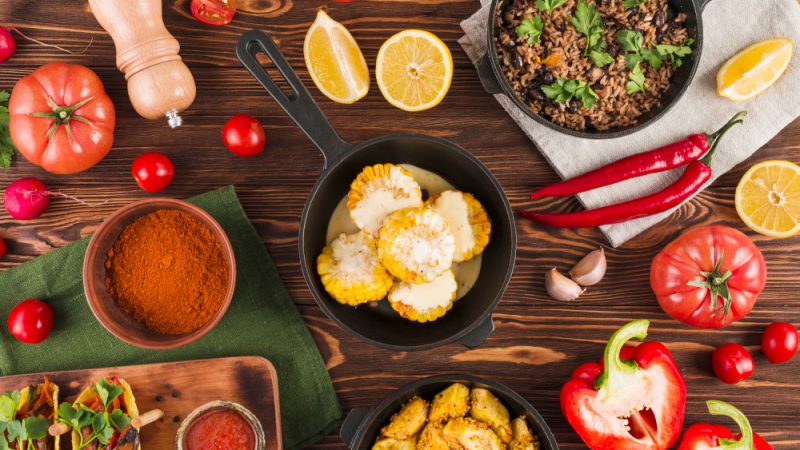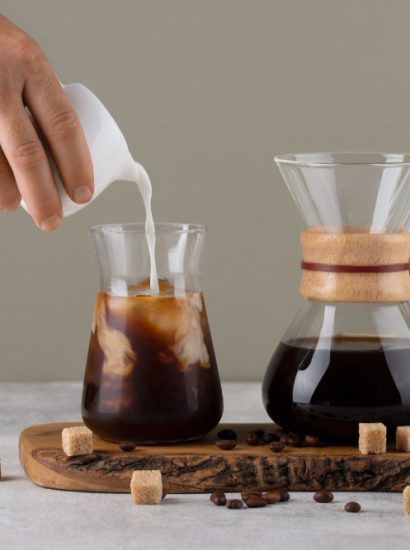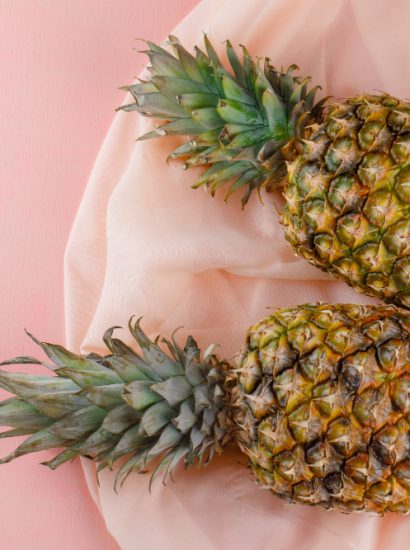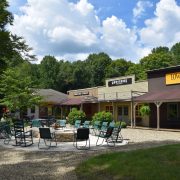Colca Valley isn’t just a feast for the eyes—its culinary landscape is equally spectacular. Rich in tradition and bursting with indigenous flavors, the valley’s cuisine reflects centuries of cultural fusion between ancient Andean ingredients and Spanish influences. From hearty soups that warm your soul to exotic meats and traditional beverages that tell the story of a land, every dish in Colca Valley is an invitation to explore a world of flavor. In this article, we’ll embark on a culinary journey through 11 delicious local foods that you simply must try when visiting Colca Valley. Discover the passion and history infused in every bite and learn how these unique dishes bring the valley’s heritage to life.
1. Introduction: A Culinary Journey in Colca Valley
Nestled high in the Peruvian Andes, Colca Valley is renowned for its awe-inspiring landscapes, ancient archaeological sites, and, notably, its vibrant culinary traditions. Here, every meal is a celebration of local ingredients, time-honored recipes, and the ingenuity of generations of cooks. Whether you’re a seasoned foodie or a curious traveler looking to indulge your taste buds, Colca Valley offers a gastronomic adventure that mirrors its dramatic scenery. As you traverse the valley’s rustic villages and bustling markets, you’ll encounter a rich tapestry of flavors that range from spicy and savory to refreshingly tangy. This guide highlights 11 must-try local foods that capture the essence of Colca Valley’s culinary heritage—each dish is a story waiting to be savored.
2. A Rich Culinary Heritage: The Flavors of Colca Valley
The culinary traditions of Colca Valley are deeply rooted in the Andean way of life. For centuries, local communities have relied on the land’s abundant produce and livestock to create dishes that are as nutritious as they are flavorful. Indigenous ingredients such as quinoa, potatoes, and locally grown maize form the backbone of many recipes, while native herbs and spices add layers of complexity to every dish. Over time, Spanish colonial influences and modern culinary innovations have blended seamlessly with these age-old traditions, resulting in a unique regional cuisine that is both comforting and adventurous. In Colca Valley, food is not merely sustenance; it is an expression of cultural identity, communal values, and a celebration of the land’s bounty.
3. Hearty Soups and Stews: Chupe de Quinua and Sopa de Mani
- When the cool Andean air calls for something warm and nourishing, few dishes are as satisfying as a bowl of Chupe de Quinua or Sopa de Mani.
- Chupe de Quinua is a hearty Andean soup that brings together the wholesome goodness of quinoa, tender potatoes, local cheese, and a medley of fresh vegetables. Traditionally prepared in clay pots over open fires, this soup’s rustic flavor is accentuated by aromatic herbs and a hint of spice. Each spoonful not only warms you from the inside out but also provides a glimpse into the region’s agricultural practices and love for native grains.
- In a similar vein, Sopa de Mani offers a delightful twist on traditional soups by incorporating peanuts into its rich, savory broth. The creamy texture of the peanuts melds perfectly with the earthy flavors of local vegetables and meat, resulting in a dish that is both satisfying and deeply comforting. Whether served as a starter or a main course, these soups highlight the resourcefulness of Colca Valley’s cooks, who transform simple, local ingredients into culinary masterpieces.
4. Mountain Meats: Alpaca Steak and Adobo Arequipeño
- The high-altitude pastures of Colca Valley yield some of the leanest and most flavorful meats in the Andes, and nothing exemplifies this better than Alpaca Steak and Adobo Arequipeño.
- Alpaca Steak is a signature dish in the region, prized for its tender texture and subtle, earthy flavor. Raised on natural pastures, alpacas produce meat that is low in fat and high in protein, making it a healthy yet indulgent treat. Often grilled to perfection and served with locally grown vegetables or traditional potato dishes, alpaca steak is a must-try for meat lovers seeking an authentic Andean experience.
- Complementing the richness of alpaca is Adobo Arequipeño, a pork stew that is deeply infused with local spices and marinated in chicha de jora—a traditional fermented corn beverage. This slow-cooked dish is a symphony of flavors, where tender pork meets the tangy, slightly sweet notes of the marinade, creating a dish that is both hearty and memorable. Together, these mountain meats offer a window into the agricultural and culinary practices of Colca Valley, where every ingredient is treated with reverence and skill.
5. Spicy and Stuffed: Rocoto Relleno – A Fiery Delight
- No exploration of Colca Valley’s cuisine would be complete without sampling Rocoto Relleno, a dish that brings a burst of heat and flavor to every bite. Rocoto, a native spicy pepper known for its vibrant color and intense flavor, is hollowed out and stuffed with a savory mixture of minced meat, onions, garlic, and local herbs. The stuffed pepper is then baked until the flavors meld together in a delightful harmony of spice and texture.
- What makes Rocoto Relleno particularly special is its ability to balance heat with a touch of sweetness and creaminess—often provided by a generous topping of melted cheese. This dish is a testament to the region’s love for bold, spicy flavors and is a favorite among locals and visitors alike. Whether enjoyed as a main course or as a side dish, Rocoto Relleno is sure to ignite your palate and leave you craving more of Colca Valley’s fiery culinary traditions.
6. An Andean Delicacy: Cuy Chactado
- For the adventurous eater, Cuy Chactado—or fried guinea pig—is a traditional Andean delicacy that holds a revered place in local cuisine. Despite its reputation in other parts of the world, cuy has been a staple in the Andean diet for centuries, celebrated for its tender meat and nutritional value. In Colca Valley, cuy is typically prepared by lightly seasoning it with indigenous herbs and spices before frying it until the skin becomes irresistibly crispy.
- This dish is often served with a side of potatoes or corn and is best enjoyed in the company of friends and family, where sharing food is an integral part of social life. Cuy Chactado not only provides a unique culinary experience but also offers insight into the cultural practices of the Andean communities, where every dish is a tribute to the land and its resources.
7. Savory Snacks and Baked Goods: Tamales and Empanadas Andinas
- Between hearty meals, Colca Valley’s locals enjoy a variety of savory snacks and baked goods that perfectly capture the essence of traditional Andean cooking. Tamales de Maíz are a popular choice—soft, fragrant bundles of corn dough filled with meat, cheese, or vegetables, wrapped in corn husks, and steamed to perfection. These tamales are often enjoyed as a quick snack or a hearty breakfast and are a staple at local festivals and family gatherings.
- Another beloved snack is Empanadas Andinas, which are savory pastries stuffed with a variety of fillings such as spiced meat, potatoes, or cheese. These handheld delights are perfect for on-the-go eating and serve as a comforting reminder of home-cooked meals. Both tamales and empanadas showcase the versatility of corn and locally sourced ingredients, embodying the resourcefulness and creativity that define Colca Valley’s culinary traditions.
8. Traditional Cheeses and Fresh Bites: Queso Fresco Andino
- Dairy products play a significant role in Andean cuisine, and Queso Fresco Andino stands out as a must-try local specialty. This fresh cheese is known for its mild flavor and soft, crumbly texture, making it an ideal complement to many dishes. Whether sprinkled over salads, melted into stews, or enjoyed on its own with a drizzle of local honey, Queso Fresco Andino captures the essence of Colca Valley’s pastoral traditions.
- Local artisans take great pride in crafting this cheese using traditional methods that have been passed down through generations. The result is a product that is not only delicious but also deeply connected to the land and its people. Enjoying Queso Fresco Andino is like taking a bite out of Colca Valley’s history—a flavor that embodies the region’s natural richness and artisanal expertise.
9. A Feast Prepared Underground: Pachamanca – The Andean Ritual
- One of the most fascinating culinary traditions of Colca Valley is Pachamanca, a dish that is as much about the cooking process as it is about the food itself. Derived from the Quechua words “pacha” (earth) and “manca” (pot), Pachamanca is a traditional Andean meal prepared by slow-cooking a variety of meats (often including alpaca, pork, and chicken) along with potatoes, corn, and herbs in an underground pit. Heated stones are arranged in a circle, and the ingredients are layered on top before being covered with earth to trap the heat and infuse the food with a smoky, rustic flavor.
- Pachamanca is more than just a meal—it is a communal event that brings people together to celebrate tradition and nature. The slow cooking method not only enhances the natural flavors of the ingredients but also symbolizes the deep connection between the Andean people and their land. Sharing Pachamanca with family and friends is an immersive cultural experience, one that celebrates both culinary artistry and the enduring spirit of Colca Valley.
10. Sip the Spirit of the Andes: Chicha de Jora and More Beverages
- No culinary exploration of Colca Valley would be complete without a taste of its traditional beverages. Chicha de Jora is perhaps the most iconic of these drinks—a fermented corn beer that has been produced in the Andes for centuries. Its slightly sour, robust flavor makes it the perfect accompaniment to the region’s spicy and savory dishes. Often brewed in small batches using age-old techniques, Chicha de Jora is more than just a beverage—it’s a cultural ritual that unites communities during festivals, celebrations, and everyday meals.
- Beyond Chicha de Jora, local markets and eateries offer a variety of fresh fruit juices and herbal infusions made from indigenous plants. These refreshing drinks not only quench your thirst but also provide a glimpse into the valley’s biodiversity and traditional healing practices. Whether you’re raising a glass of Chicha de Jora to toast a memorable meal or savoring a cool, locally squeezed fruit juice on a hot day, these beverages encapsulate the vibrant and hospitable spirit of Colca Valley.
Conclusion
- Colca Valley’s culinary landscape is a vibrant tapestry woven from history, culture, and the land’s natural bounty. From the hearty warmth of Chupe de Quinua and Sopa de Mani to the fiery allure of Rocoto Relleno and the rustic charm of Pachamanca, every dish offers a unique taste of Andean tradition. Delicate cheeses, succulent mountain meats, and time-honored snacks like tamales and empanadas reveal a deep commitment to preserving ancient recipes while embracing the flavors of modern life. And with every sip of Chicha de Jora, you’re invited to partake in a centuries-old celebration of community and tradition.
- Whether you’re an adventurous foodie or a traveler seeking a deeper connection with local culture, sampling these 11 delicious local foods is an essential part of experiencing Colca Valley. Each bite tells a story—of hardworking farmers, innovative cooks, and a people deeply in tune with their land. So, next time you find yourself in this enchanting corner of Peru, let your taste buds lead you on a journey through the flavors of Colca Valley. Embrace the culinary heritage, savor every morsel, and create memories that will last long after the meal is over.
Frequently Asked Questions (FAQs)
Q1: What makes Colca Valley’s cuisine unique compared to other regions in Peru?
A: Colca Valley’s cuisine is distinguished by its blend of ancient Andean ingredients and Spanish colonial influences. The region’s high-altitude agriculture yields unique staples like quinoa, native potatoes, and alpaca meat, while traditional cooking methods—such as preparing Pachamanca in an underground pit—add a distinctive rustic flavor to the dishes.
Q2: Are these local dishes widely available for tourists in Colca Valley?
A: Yes, many local restaurants, markets, and family-run eateries throughout Colca Valley offer these traditional dishes. Whether you’re dining in a small village or a more established tourist spot, you’ll have plenty of opportunities to experience the region’s culinary delights.
Q3: Can I try these dishes if I have dietary restrictions?
A: While many traditional dishes are meat-based or incorporate dairy, several options such as vegetable-based soups or specially prepared tamales may be adapted to meet dietary needs. It’s always a good idea to inform your server of any dietary restrictions to see if modifications can be made.
Q4: What is the best way to experience a traditional Pachamanca?
A: Participating in a Pachamanca is often a communal event. Many local tour operators and cultural centers in Colca Valley organize Pachamanca events where you can not only taste this unique meal but also learn about the traditional cooking process and cultural significance behind it.
Q5: Where can I find authentic Chicha de Jora in Colca Valley?
A: Authentic Chicha de Jora is typically served in local markets, traditional eateries, and during cultural festivals. Many family-run establishments take pride in brewing their own small-batch Chicha de Jora using traditional methods, offering you a genuine taste of Andean heritage.
Also read : Pulut Hitam Cake: A Unique Twist on a Classic Dessert









